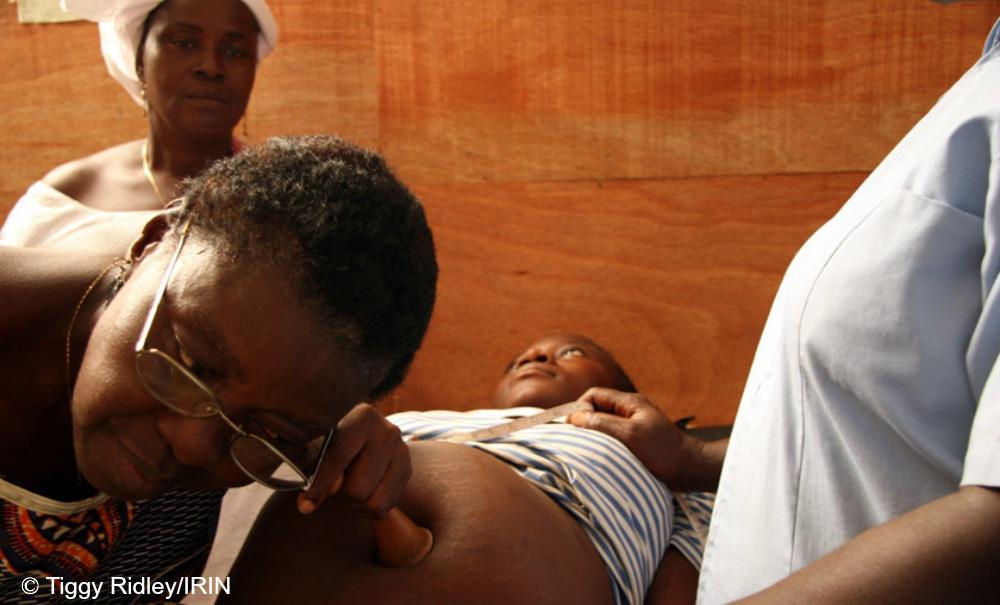Price tag of HIV response to more than double by 2033


Released at the SA AIDS Conference, the research mathematically modelled the cost of county’s HIV response and what it will take to meet ambitious international development targets adopted by Health Minister Dr Aaron Motsoaledi in 2014. Led by Wits University health economist Dr Gesine Meyer-Rath, the research found that South Africa’s HIV programme will cost about R40 billion each year by 2033 – more than double the R21 billion budgeted for the programme in the next financial year.
The analysis also revealed the top 18 most cost-effective ways South Africa can tackle its epidemic. Top of the list was increasing condom distribution, medical male circumcision and mass communication campaigns promoting safer sex among teens.
According to Meyer-Rath, current budgets will only allow the country to implement about two-thirds of these programmes at the levels needed to reach United National targets adopted by Motsoaledi last year. These targets call for 90 percent of HIV-positive people know their status, access treatment and adhere well enough to treatment to achieve undectable HIV viral loads by 2020.
HIV viral load testing measures the amount of virus in a person’s blood. When these levels are very low, they are said to be undectable. While this does not mean a person is cured, it reduces the risk a person will transmit the virus.
WHO expected to recommend ‘test and offer’ in December
[quote float= right]South Africa’s ‘best buys’ for HIV were condom distribution, medical male circumcision and mass communication campaigns promoting safer sex among teens
Staying Motsoaledi’s course will mean testing more than 35 million South Africans each year and mean the country will need to continue to move HIV testing out of clinics and into homes and communities through mobile testing units. It will also mean starting at least 670,000 people on ARVs every year, Meyer-Rath told Health-e News.
But achieving the minister’s goals, dubbed the “90-90-90” targets, could also cut new HIV infections by 75 percent and AIDS-related deaths by two-thirds by 2030. The move will also save the country money in about 10 year, she added.
“We already have a huge commitment to millions of people on ARVs that will require this funding to be continued,” she said. “The cost of HIV will continue to rise the question is hoe much do we want it to rise before we see some cost savings.”
Tuberculosis (TB), much of it fuelled by HIV, remains South Africa’s leading cause of death. About 60 percent of the country’s TB patients are co-infected with HIV. Researcher Sarah Magni added that reaching 90-90-90 targets in TB would mean a 46 percent budget increase in the next five years.
Need for alternative financing mechanisms
Independent health economist Teresa Guthrie said the figures pointed to a need for South Africa to begin experimenting with alternative mechanisms to fund its HIV progamme like financial transaction taxes or air travel levies.
Motsoaledi’s tenure as health minister has been marked by quick moves to bring the country in line with international HIV treatment guidelines. Meyer-Rath’s research is expected to help the Department of Health decide whether it will adopt new guidelines likely to be proposed by the World Health Organisation (WHO) in December allowing HIV-positive people to start ARVs as soon as they are diagnosed. This approach has been called “test and offer.”
Currently, patients must wait until their CD4 counts – a measure of the immune system’s strength – fall to 500.
“We need to start thinking ahead about the new guidelines and then trying to figure out where those resources are going to come from,” said Dr Yogan Pillay, Department of Health deputy director of HIV, TB and women and child health. “This is in the context where donor funding is flat-lining and the economy is in the toilet.” – Health-e News.
An edited version of this story first appeared in The Star and Pretoria News newspapers
Author
Republish this article
This work is licensed under a Creative Commons Attribution-NoDerivatives 4.0 International License.
Unless otherwise noted, you can republish our articles for free under a Creative Commons license. Here’s what you need to know:
You have to credit Health-e News. In the byline, we prefer “Author Name, Publication.” At the top of the text of your story, include a line that reads: “This story was originally published by Health-e News.” You must link the word “Health-e News” to the original URL of the story.
You must include all of the links from our story, including our newsletter sign up link.
If you use canonical metadata, please use the Health-e News URL. For more information about canonical metadata, click here.
You can’t edit our material, except to reflect relative changes in time, location and editorial style. (For example, “yesterday” can be changed to “last week”)
You have no rights to sell, license, syndicate, or otherwise represent yourself as the authorized owner of our material to any third parties. This means that you cannot actively publish or submit our work for syndication to third party platforms or apps like Apple News or Google News. Health-e News understands that publishers cannot fully control when certain third parties automatically summarise or crawl content from publishers’ own sites.
You can’t republish our material wholesale, or automatically; you need to select stories to be republished individually.
If you share republished stories on social media, we’d appreciate being tagged in your posts. You can find us on Twitter @HealthENews, Instagram @healthenews, and Facebook Health-e News Service.
You can grab HTML code for our stories easily. Click on the Creative Commons logo on our stories. You’ll find it with the other share buttons.
If you have any other questions, contact info@health-e.org.za.
Price tag of HIV response to more than double by 2033
by lauralopez, Health-e News
June 12, 2015



